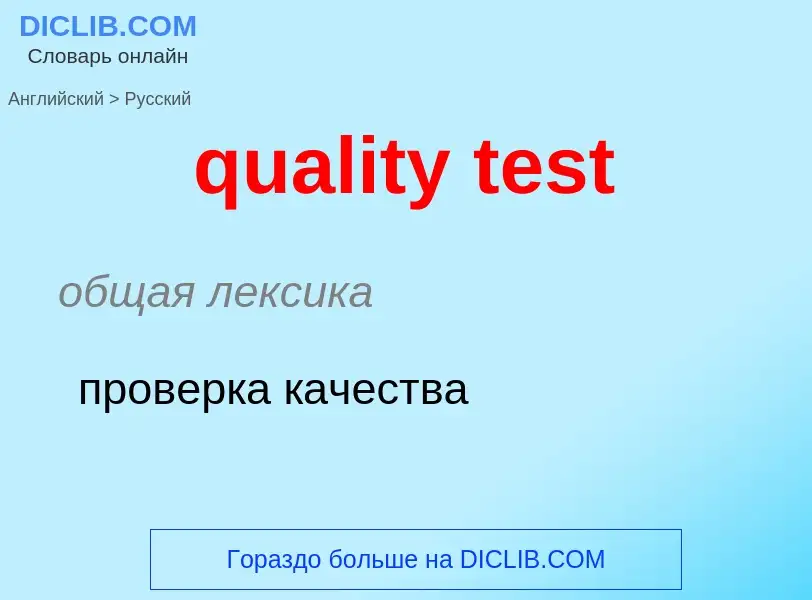Перевод и анализ слов искусственным интеллектом ChatGPT
На этой странице Вы можете получить подробный анализ слова или словосочетания, произведенный с помощью лучшей на сегодняшний день технологии искусственного интеллекта:
- как употребляется слово
- частота употребления
- используется оно чаще в устной или письменной речи
- варианты перевода слова
- примеры употребления (несколько фраз с переводом)
- этимология
quality test - перевод на русский
общая лексика
проверка качества
нефтегазовая промышленность
степень компенсации влияния неисправностей
общая лексика
добротность изображения
медицина
качество изображения
['kwɔlitisə:k(ə)l]
американизм
кружок качества (на предприятии)
общая лексика
тестовое покрытие
определяет, насколько данный тест охватывает проверкой все заданные требования
Смотрите также
['ʌndəvəultidʒ]
электротехника
недостаточное напряжение
пониженное напряжение
существительное
электротехника
недостаточное напряжение
пониженное напряжение
Определение
Википедия
Fault coverage refers to the percentage of some type of fault that can be detected during the test of any engineered system. High fault coverage is particularly valuable during manufacturing test, and techniques such as Design For Test (DFT) and automatic test pattern generation are used to increase it.
In electronics for example, stuck-at fault coverage is measured by sticking each pin of the hardware model at logic '0' and logic '1', respectively, and running the test vectors. If at least one of the outputs differs from what is to be expected, the fault is said to be detected. Conceptually, the total number of simulation runs is twice the number of pins (since each pin is stuck in one of two ways, and both faults should be detected). However, there are many optimizations that can reduce the needed computation. In particular, often many non-interacting faults can be simulated in one run, and each simulation can be terminated as soon as a fault is detected.
A fault coverage test passes when at least a specified percentage of all possible faults can be detected. If it does not pass, at least three options are possible. First, the designer can augment or otherwise improve the vector set, perhaps by using a more effective automatic test pattern generation tool. Second, the circuit may be re-defined for better fault detectibility (improved controllability and observability). Third, the designer may simply accept the lower coverage.





